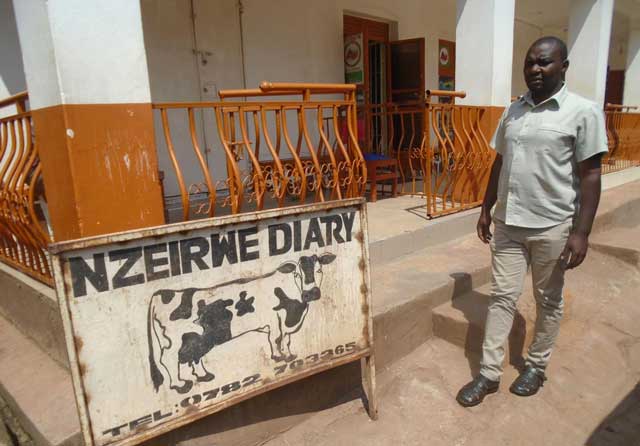
Kigezi, Uganda | THE INDEPENDENT | Dairy Farmers in Kabale and Rubanda districts are stranded following a drop of milk prices. The price of milk has dropped to 600 Shillings from between 1,300 and 14,00 Shillings per liter at major dairies across the Kigezi region. The farm gate price of milk has also dropped from 800 to 300 Shillings.
Emmanuel Rugyendo, a dairy farmer from Kyanamira sub-county in Kabale district says that the drop in milk prices has left them in a financial dilemma. He traces the problem to the recent controversies surrounding the sale of Ugandan milk in Kenya over quality issues.
Reports indicate that between January 1 and 12, Kenyan authorities confiscated 54 tons of powdered milk and 140,000 litres of Long Life milk from Pearl Dairies and its distributors, citing nonconformity to standards and smuggling. Uganda has reportedly lost more than USD 360,000 in milk exports due to the seizure.
According to Rugyendo, many companies that have been collecting milk from Kabale and neighboring districts to Kampala have stopped operations.
Elvis Nzeirwe Byonanebye, the director of Nzeirwe Diary who is also a dairy farmer from Katuna Town Council attributes the fall of milk prices to the Uganda-Rwanda impasse. Byonanebye says that milk prices started dropping with the border closure in February 2019.
He says that the border closure greatly affected diary factories which used to process yogurt and other milk products in Kisoro district for export to Rwanda. The factories were the main buyers of milk from the farmers in Kabale and Rubanda.
Byonanebye says that the reduction of milk prices compared to high prices of inputs like animal drugs, labor, power and other utilities has left farmers in losses. He wants the government to intervene and reduce taxes on animal drugs in order to bring down the cost of treating cattle.
Gideon Byamukama, a farmer from kashaki village in Bubaare sub-county, Rubanda district and Hebert Habasa, from kamuganguzi sub-county, Kabale district attribute the problem to general poverty among milk consumers.
They say that currently people have no money to buy milk for home consumption.
 The Independent Uganda: You get the Truth we Pay the Price
The Independent Uganda: You get the Truth we Pay the Price


